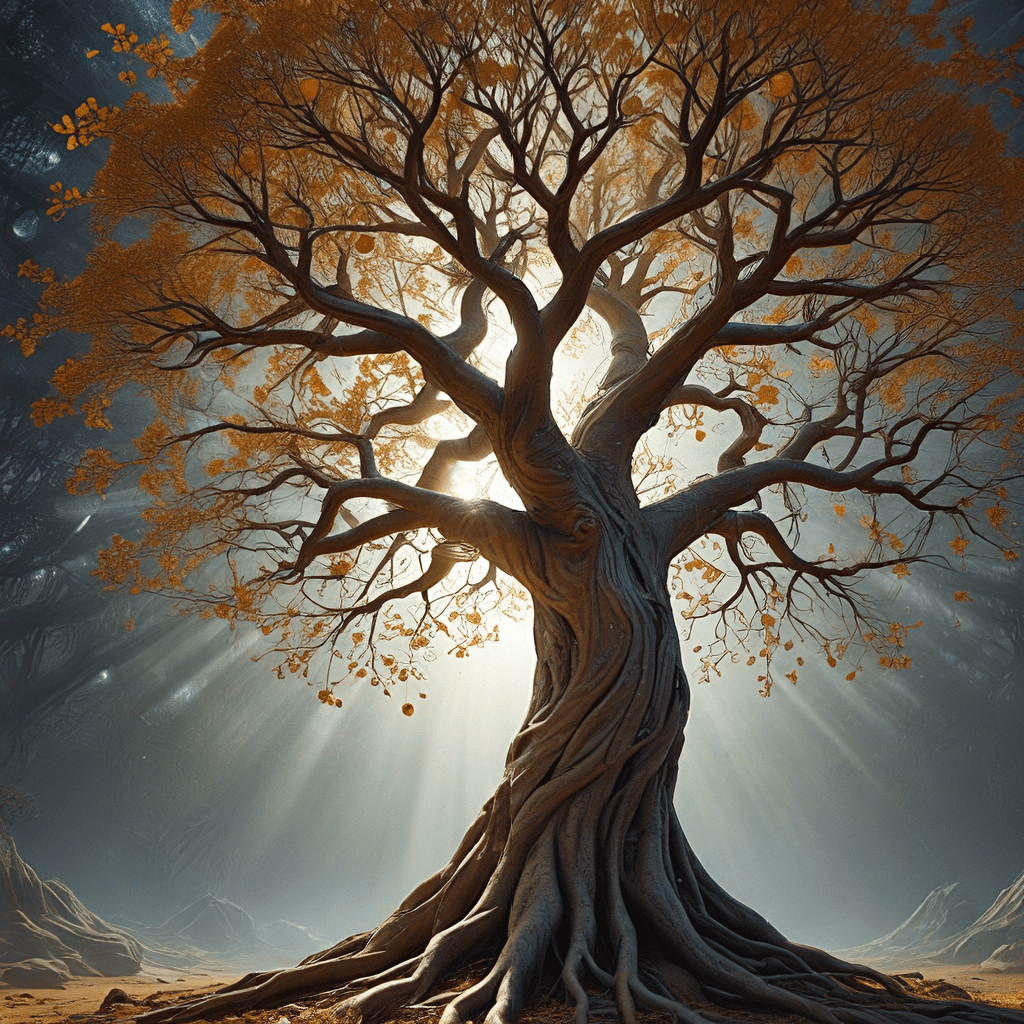1. Introduction: Bridging Ancient and Modern
In the heart of ancient Egyptian mythology lies a powerful symbol: the Cosmic Tree. This majestic tree stands as a testament to the interconnectedness of life, death, and rebirth. Its branches reach towards the heavens, symbolizing the journey of the soul from the earthly realm to the afterlife. While rooted in ancient tradition, the Cosmic Tree resonates with modern audiences, offering timeless wisdom about life’s cycles and our place in the universe.
2. The Tree of Life: Blooming with Potential
The Tree of Life, a vital component of the Cosmic Tree, represents the boundless potential of creation and growth. It is associated with the very source of life, symbolized by deities like Atum, the self-created god who emerged from the primordial waters. Atum, often depicted as a sun god, signifies the life-giving power of the sun. Similarly, Ra, the sun god who travels across the sky, embodies the energy and vitality that fuels all living beings. Another significant deity linked to the Tree of Life is Ptah, the creator god who shaped the world from primordial chaos. The Tree of Life, therefore, embodies the cosmic order and harmony, known as “ma’at,” that governs the universe.
3. The Tree of Death: The Passage to the Afterlife
The Tree of Death, another integral branch of the Cosmic Tree, stands as a gateway to the afterlife. It signifies the inevitable transition from this life to the next. This branch is often associated with Osiris, the god of the underworld and resurrection. Osiris, who was murdered by his brother Set, was resurrected by his wife Isis, embodying the promise of renewal after death. The Tree of Death, therefore, becomes a symbol of transformation and rebirth. As the soul embarks on its journey to the Duat, the Egyptian underworld, it encounters the Tree of Death, marking its passage into a new dimension of existence.
4. The Branches of Life: Navigating the Cycle of Existence
The Cosmic Tree, with its interconnected branches, represents the cyclical nature of life and death. Each branch symbolizes a different aspect of existence, reflecting the intricate tapestry of human experience. For instance, the branch of creation embodies the birth and growth of all things, while the branch of knowledge symbolizes the pursuit of wisdom and understanding. The branch of justice represents the principles of fairness and order that govern the universe. These branches are all linked by the overarching principle of “ma’at,” ensuring harmony and balance. As the soul traverses the afterlife, it encounters these branches, reflecting on its deeds and seeking judgment from the gods.
5. The Tree of Knowledge: Seeking Wisdom and Understanding
The Tree of Knowledge, a vital branch of the Cosmic Tree, represents the pursuit of wisdom and enlightenment. It is often associated with Thoth, the god of knowledge and the scribe of the gods. Thoth, depicted with the head of an ibis, embodies the power of language, writing, and intellectual pursuits. Climbing the Tree of Knowledge signifies a quest for understanding the mysteries of the cosmos and finding meaning in life. This branch emphasizes the importance of knowledge in navigating the complexities of existence, both in this life and in the afterlife. By seeking knowledge, we embark on a journey of self-discovery, aligning ourselves with the cosmic order and seeking harmony within the branches of life and death.




